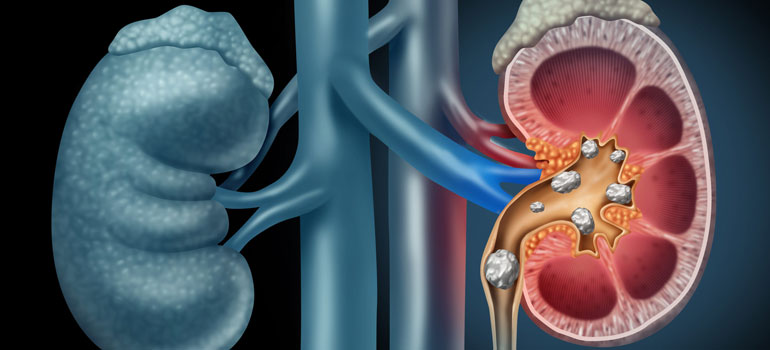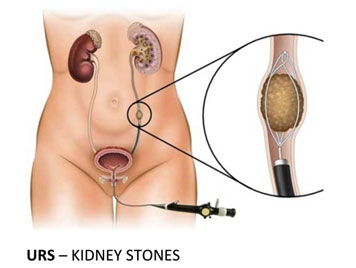
Ureteroscopy is highly successful procedure for the retrieval of stone in the ureter. This is a routine procedure performed by urologists.
The primary decision is whether to apply surgical treatment or wait. Removal of kidney stones by any methodology is necessary when there is evidence of:
This is also used for the diagnosis of any malignant lesion in the ureter. Ureteroscopy are of two types:
1. Rigid Ureteroscopy
2. Flexible Ureteroscopy
Ureterorenoscope (URS): Ureterorenoscopy (URS) involves the passage of an instrument namely Ureteroscope through normal urinary passage. This is advanced under vision through the normal urinary passage under anathesia. Once the urinary stoneis localised, it can either be picked up by forceps and pulled out or can be broken into dust like tiny fragments with the help of laser. Double J Stent is usually kept after the procedure to drain the kidney. It is a very safe procedure in experienced hands.

Retrograde Intrarenal Ureteroscopic Surgery (RIRS): Flexible ureteroscope can be passed through the normal ureter opening all the way up on the kidneys and stones in the calyces of the kidney can be fragmented into fine particles using laser technology. This procedure requires general anaesthesia, spinal or epidural anaesthesia. Hospitalization is generally for 1 or 2 days only.

Open Surgery: Open Surgery for Ureteric Stone are extremely rate nowadays. However, they may be required in large ureteric calculi not amenable to any Endoscopic procedure.